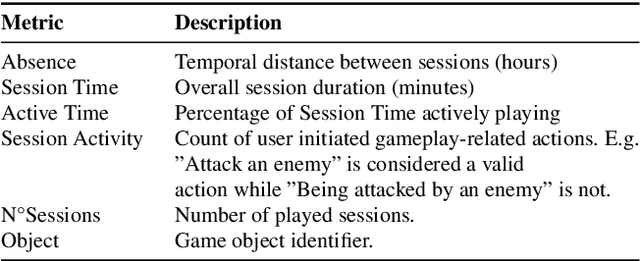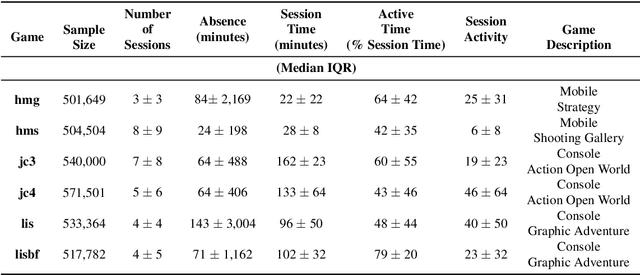Mathieu J. Ruiz
Approximating Attributed Incentive Salience In Large Scale Scenarios. A Representation Learning Approach Based on Artificial Neural Networks
Aug 03, 2021



Abstract:Incentive salience attribution can be understood as a psychobiological process ascribing relevance to potentially rewarding objects and actions. Despite being an important component of the motivational process guiding our everyday behaviour its study in naturalistic contexts is not straightforward. Here we propose a methodology based on artificial neural networks (ANNs) for approximating latent states produced by this process in situations where large volumes of behavioural data are available but no strict experimental control is possible. Leveraging knowledge derived from theoretical and computational accounts of incentive salience attribution we designed an ANN for estimating duration and intensity of future interactions between individuals and a series of video games in a large-scale ($N> 3 \times 10^6$) longitudinal dataset. Through model comparison and inspection we show that our approach outperforms competing ones while also generating a representation that well approximate some of the functions of attributed incentive salience. We discuss our findings with reference to the adopted theoretical and computational frameworks and suggest how our methodology could be an initial step for estimating attributed incentive salience in large scale behavioural studies.
 Add to Chrome
Add to Chrome Add to Firefox
Add to Firefox Add to Edge
Add to Edge